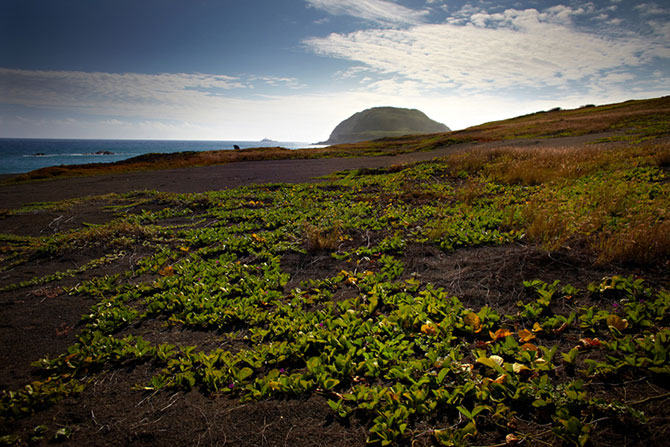The Wall of Remembrance at Paradise Valley Estates contains four pictures of U.S. Marine Corp combat operations during World War II, Korea and Vietnam. One of them is Joe Rosenthal’s historic photograph of the raising of the U.S. flag atop Mt. Suribachi.
Japan and the United States needed the small island of Iwo Jima, Japanese home territory located halfway between the Marianas and Japan. Vice Adm. Raymond Spruance’s 5th Fleet controlled the air and sea. Marine Maj. Gen. Harry Schmidt commanded the V Amphibious Corps, comprised of the 3rd, 4th, and 5th Marine Divisions. Marine Lt. Gen. Holland “Howlin’ Mad” Smith was commander of expeditionary troops. In mid-1944, the U.S. began bombing and shelling Iwo Jima, and attacking ships carrying reinforcements and supplies to the island.
The Japanese had fortified the island with hundreds of hidden pillboxes and underground facilities and planned to fight much of the battle from positions underground. On February 19, 1945, 30,000 Marines began landing on the soft volcanic sand. Their mission was to capture Mt. Suribachi and the airfields and defeat the Japanese. Once the beach area was filled with landing craft and terraces clogged with Marines, mortars, artillery shells and machine guns were fired on them from Mt. Suribachi and pillboxes facing the water inflicting heavy casualties. The 28th Regiment attacked south toward Mt. Suribachi, supported by tanks, artillery, naval gunfire, and air strikes. Meanwhile, 40,000 more Marines, with supporting Navy and Army units, landed and joined the attack to the north.
On D+4, Suribachi fell to the Marines who then raised the U.S. flag atop the mountain. Later that day, a larger flag was raised by five Marines and a Navy corpsman, while photographer Joe Rosenthal shot his classic photo of that historic event. The fight for the airfields and northern half of the island was fierce and the 3rd Marine Division joined the assault. Marines used flame-throwers, napalm, grenades, rifles and demolitions against a fanatical enemy in underground caves and fortified positions. After the airfields were captured, P-51 Mustangs arrived to provide close air support.
After 36 days of bloody fighting, the Americans captured the island. Gen. Smith said. “It was the most savage and costly battle in the history of the Marine Corps.” The Marines and their multiservice supporting arms killed about 20,000 Japanese and captured nearly 1,100 prisoners. The V Amphibious Corps sustained 24,000 casualties and more than 6,000 men died. Twenty-two Marines and five sailors were awarded the Congressional Medal of Honor, more than half posthumously. By war’s end, about 2,400 B-29 bombers, carrying 27,000 crewmen had made emergency landings on the island.




